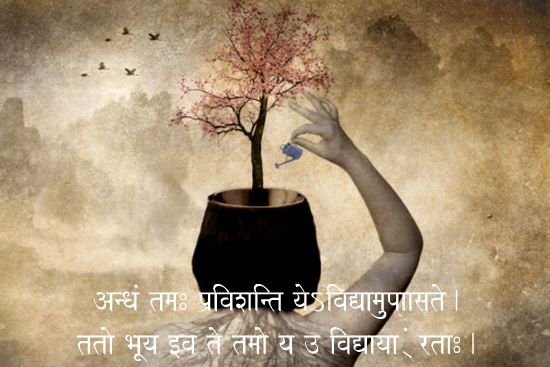Rudraksha (Sanskrit: rudrākṣa) (“Rudra-eyed”) is the name of the dark berries of Elaeocarpus ganitrus, used to make prayer beads (Sanskrit: mālā). The word is a Sanskrit compound consisting of the name Rudra and ākṣa (“eye”). The Latin name ‘ganitrus’ possibly taken from ganitri, the name for this species in Sundanese and Malay.
The Rudraksha is a large evergreen broad-leaved tree that grows in the area from the Gangetic Plain to the foothills of the Himalayas. Rudraksha trees are also found in middle areas of Nepal. Rudraksha seeds are covered by an outer shell of blue color when fully ripe, and for this reason are also known as blueberry beads. The blue colour is derived not from pigment but is structural.
Rudraksha beads are the material from which sacred garlands (108 beads in number) are made. The term is used both for the berries themselves and as a term for the type of mālā made from them. In this sense, a rudraksha is a Saivite rosary, used for japa mala. Repetitive prayer (japa) is a common aid to worship in Hinduism, and Rudraksha mālā are worn by many Hindus.Rudraksha is also used for treatment of various diseases in traditional Indian medicine.
The berries show variation in the number of grooves on their surface, and are classified on the basis of the number of divisions that they have. A common type has five divisions, and these are considered to be symbolic of the five faces of Shiva.
The Rudraksh seeds are brittle in nature and so should be protected from chemicals.
The best way to find the authenticity of a rudraksha is to get it X-rayed and count the number of compartments inside. If they are equal to the number of lines outside the rudraksha is real.
This rudraksha mala is made from fine (not rough), ripe and hard “real” rudraksha seeds that “SINKS IN WATER”.
Rudraksha seeds (beads) are used for spritual mala or rosary such as in Hindu and Buddishm. Rudraksha trees are grown in the Himalayan villages of Nepal (the native homeland of Rudraksha) which are favored and valued more than other Rudraksha malas.
Rudraksha mala has been used by Hindus (as well as Sikhs and Buddhists) as rosary for thousands of years for meditation purposes to sanctify the mind, body and soul. The word Rudraksha is derived from Rudra (Shiva—the Hindu God of all living creatures) and aksha (eyes). So, Rudraksha is related to Shiva’s eyes. One Hindu mythology says that once Lord Shiva became so compassionate after seeing the sufferings of mankind that He could not stop to shed tear from his eye. This single tear from Shiva’s eye grew into the Rudraksha tree. Rudraksha tree belongs to the Elaeocarpus genus of the Elaeocarpaceae family that grows from the Gangetic plain upto the Himalayas. Rudraksha fruit is green in color but turns black when dried. The central hard Rudraksha uniseed may have 1 to 21 faces. The five-faced Rudraksha seeds are the most common. Besides as rosary for meditation, the Rudraksha mala is often used as a fashionable necklace or a bracelet. Thus it serves the dual purpose of fashion and protects the wearer psychologically.
Japa mantra for Rudraksha mala: Om Hreem Shivaya
Rudraksha rules the planet: Jupiter
Spritual Belives that Rudraksha Cures: Depression, stress, diabetes, cancer, heart diseases, blood related diseases etc

Beautiful research and every body must read this topic. Recently one picture of Sanjay Dutt also seen where rudrakhs found & what is power of different type is shown.
can you let me know from where can I purchase green and raw rudraksha in the month of june and july.I will be grateful.